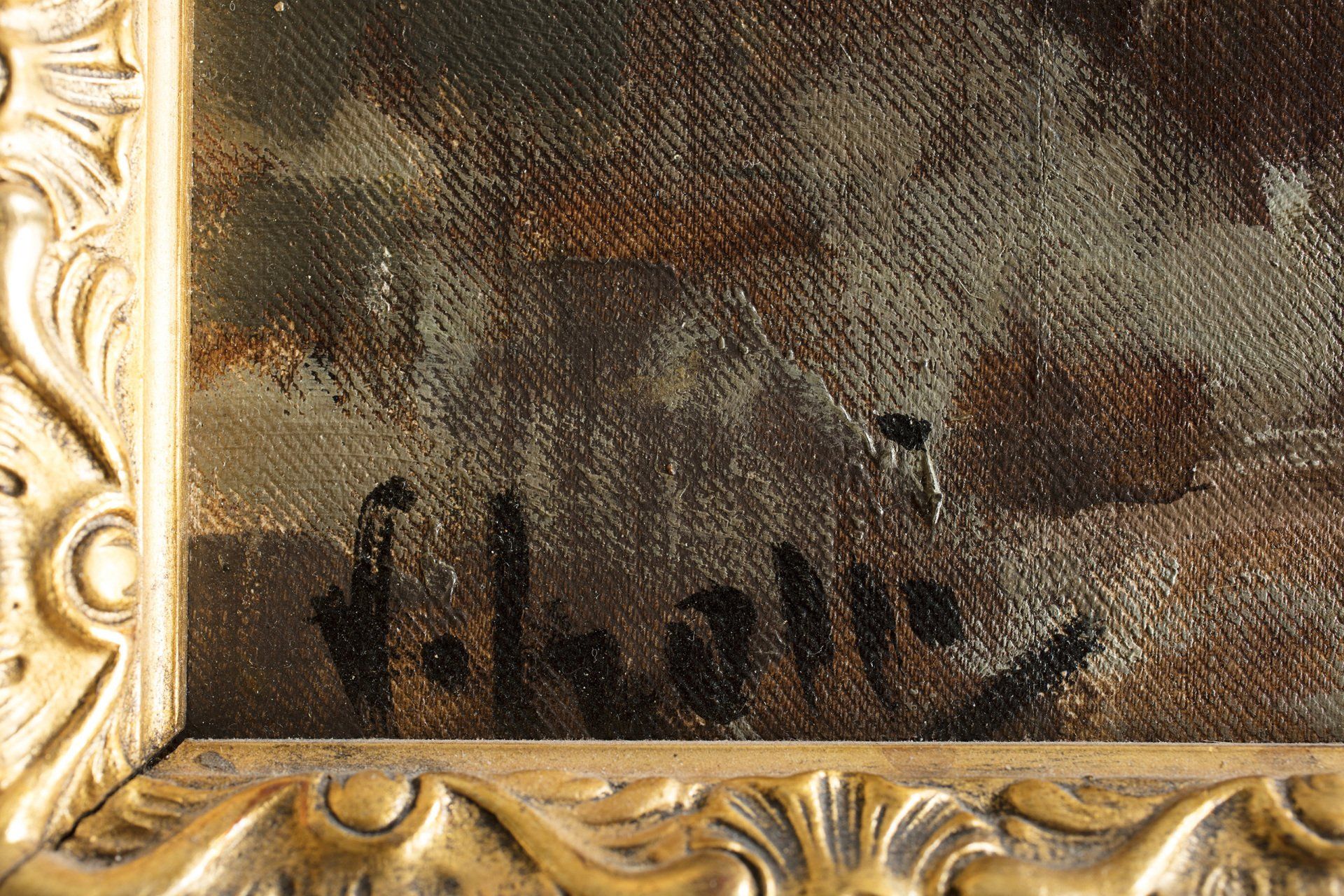Vincenzo Irolli
(Naples 1860 -1949)
Author: Vincenzo Irolli (Naples 1860 -1949)
Period: Early twentieth century
Oil painting on canvas depicting penitent women praying on a country staircase. Frame in gilded wood. Signed bottom left V.Irolli Author: Vincenzo Irolli (Naples 1860-1949) size: 95x80 cm.
Biography
Born in Naples on 30 September 1860, in 1877 he enrolled at the Institute of Fine Arts in Naples, where he had Gioacchino Toma and Maldarelli as teachers. In 1878 he created the Portrait of the painter Raffaele Izzo, which aroused the curiosity of Domenico Morelli; the following year, just nineteen, at the XV Mostra della Promotrice Salvator Rosa, he presents Felice rimembranza, with whom he wins the first prize. After completing his studies in 1880, he began to paint intensely, drawing inspiration from the painting of Morelli and Michetti, in a palette full of strong chromatic lighting. He creates landscapes, views of Venice and Naples, scenes of daily life (often set in markets), children, street urchins, women in mischievous attitudes (maternal scenes are also typical), sensual commoners and still lifes. At the Neapolitan Promoter of 1881 he presented A head; in 1883 a Study from life. In the same year he exhibited Capriccio at the Fine Arts exhibition in Rome. In 1883 he made the Portrait of the painter Garibaldi Garani and in 1884 that of Francesco Netti. At the Italian General Exposition in Turin he participates with two works: Love and duty and the modern Magdalene; At the Neapolitan Promoter of 1885 he exhibited three works; in 1886 he presented the portraits of Carmine Franchi and the Avvocato Monaci. In 1887, at the National Artistic Exhibition in Venice, he exhibited the canvases: Dal vero, Chiaroscuro and Studio. In 1888, at the Italian Exposition in London, he presented two Studies. He exhibited in Munich in 1890 and in the same year he became a member of the Circolo Artistico di Napoli, remaining a member until 1920. In 1891, again at the Promoter, he proposed the Primavera canvas; to that of the following year Half figure. In 1894 in Milan he presented Le prune mammole and Cavalleria Rusticana; at the 1906 exhibition the Portrait of Signor Laezza; to that of 1914 The blind man and the philosophers and, again, to the exhibition of 1915-1916 the three works: Sanctus, Pesci and Acqua di Maggio. In the years 1889-1890 he collaborated with Postiglione, Scoppetta, Volpe, Matania, Pratella, Cocco, Casciaro, Chiarolanza, Esposito, Migliaro and Caprile on the decoration of the Gambrinus Brewery in Naples. Called to exhibit at the Paris Salon in 1907 and at the Salon d'Automne in 1909 and at the Salon for the Société Nationale des Beaux-Arts, he presents Woman with chickens and Tenderness. At the 13th Venice Biennale in 1922, Irolli exhibited four canvases: Fish, The Unheard, The Invitation, The Quilt. In 1923, he was present at the XXV Exposition of Turin with the work Amici dell'Arte. In 1933 he created a solo show in Bari that achieved great success with the public and in sales. In 1936, at the Minerva of Sacred Art Exhibition in Naples, he exhibited ten works: Miraculous fishing, The washing of the feet, The healing of the blind man, The Deposition, The Communion, Christ at the tomb of Lazarus, The Virgin in adoration, The Madonna aviation, The altar boy in prayer, The feast of the Redeemer, The feast of the man born blind. Among his works we still remember: Portrait of Mrs. Emilia Laide Tedesco (Naples, private collection); The prayer (Naples, Tramontano collection); Spring Dream (Mulhouse Museum); God's smile; Empty cot; Uncertainty; On the house; In the kitchen; Waiting for the apparition; Ferdinando Russo on the balcony; The courier of the little ones (Naples, Town Hall); Love and duty; Light and shadow; Buffoon; Confidences; Girl in prayer; First Communion (Trieste, Revoltella Civic Museum); Spring (Naples, Capodimonte Museum); The Florian coffee in Venice (Turin, Modern Art Gallery). Vincenzo Irolli's painting, destined to obtain great acclaim in France at the time, with very favorable economic results, was for a long time criticized in Italy for indulging excessively in frivolous and commercial subjects. In the years of his youth, Vincenzo, who resided with his paternal family in Calvizzano, painted at a very fast pace, and due to economic hardship, between 1883 and 1895, he added to his best production a production with easily marketable subjects that yielded to a reseller of paints and materials for artists, who in turn had them copied serially by even more needy artists. This false production was therefore entirely attributed to Irolli, further damaging his image. In 1949, a few days after the artist's death, which took place in November, the art critic Paolo Ricci expressed himself harshly on Irolli's painting, defining it as rich in sentimentality, compassionate tenderness, affectation and demagogic moralism, all in a ruthlessly lit and coarse, rough and flirtatious palette.
Related works
Contact us for information regarding the work on display
Fill out the form or call to arrange a meeting
Mobile +39 335 8125486
Mobile +39 335 7774612

Opening time
- Monday
- - -
- Tue, Wed, Fri
- - -
- Thursday
- -
- Saturday
- - -
- Sunday
- Closed
Via Roma, 22 / a, 42100 Reggio Emilia RE
contact info
Ph. +39 0522 704575
Mobile +39 335 8125486
Mobile +39 335 7774612
Sign up to our newsletter
and stay informed
Subscribe to the newsletter
Phidias Antiques VAT number 00655091205 - Copyrights © 2022 Privacy policy Company Register of Bologna n. 48267 - Int. vers. euro 10,400 - Type of company: srl






